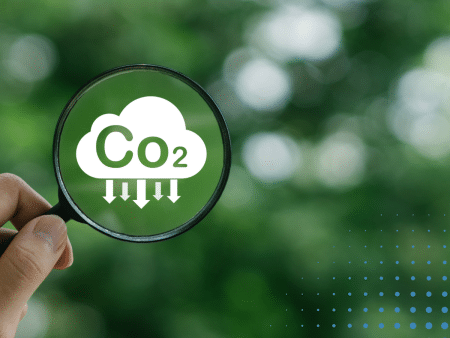
Carbon Dioxide is one of the most common gases on Earth. Its chemical formula is CO2, meaning it is comprised of one carbon atom covalently double-bound two oxygen atoms. CO2 is incombustible, colorless, and, in typical exposure concentrations, odorless and water-soluble. Carbon dioxide is the result of the oxidization of carbon.
Where is Carbon Dioxide (CO2) Found?
Carbon Dioxide (CO2) comes from both natural and anthropogenic sources and is necessary for all living things.
Natural:二氧化碳(CO2)是生物体呼吸或分解时释放的一种天然化合物。海洋和其他自然水体、火山、森林火灾和碳酸盐岩也会排放二氧化碳。与人为排放源相比,自然排放源产生的二氧化碳更多。
人类活动: The sources of CO2 that get the most attention is anthropogenic, meaning human-initiated or created. These sources are a part of everyday life for most people and are often considered unavoidable. These sources include transportation, power and heat generation, chemical and petrochemical production and use, manufacturing, agriculture, food production, etc.
The carbon dioxide (CO2) produced by the extraction, transport, processing and use of fossil fuels draws the most negative attention because it is a known contributor to rapid speed of climate change. Recently, the oil and gas industries have started taking significant steps to curb their CO2 emissions, with governments and private organizations setting carbon reduction goals and initiatives.
Risks Associated with Carbon Dioxide (CO2) Emissions
CO2 is considered a greenhouse gas. Greenhouse gases are gases in the earth’s atmosphere that allow sunlight to pass through unfiltered but do not allow heat to leave, essentially trapping heat around the planet. This increased heat has had a quick and catastrophic effect on every living thing and ecosystem, changing weather patterns, warming oceans, degrading human health, and killing plants and wildlife.
Carbon Dioxide (CO2) and other greenhouse gases are responsible for respiratory issues and health problems caused by increased ozone, leading to poor air quality. Concentrated exposure to CO2 can cause dizziness, asphyxiation, confusion, fatigue, vertigo, headaches, tinnitus, and even seizures. Air pollution has been scientifically linked to Alzheimer’s disease, infertility, cancers, birth defects, asthma, and other life-threatening conditions. Prolonged exposure has also been proven to change or slow the metabolic rate of humans. Regions that experience chronic air pollution often face significantly higher rates of these conditions and early deaths. It is estimated that 7 million people, nearly twice the population of Oklahoma, per year die as a direct result of poor air quality across the globe.
What is CCUS?
Carbon capture utilization and sequestration/storage (CCUS) is the process of capturing Carbon Dioxide (CO2) formed during power generation and industrial processes and storing it so that it is not emitted into the atmosphere, adding to the climate crisis. The three key components in the value chain include CO2 Capture, Transportation via pipeline or shipping, and utilization or storage. CCUS offers new economic opportunities by creating industries and markets centered around CO2 utilization. The captured CO2 can be used for enhanced oil recovery, production of building materials, chemicals and fuels, creating a circular economy that reduces emissions and promotes resource efficiency.
CECO offers a wide range of solutions and technologies to serve CCUS applications.



